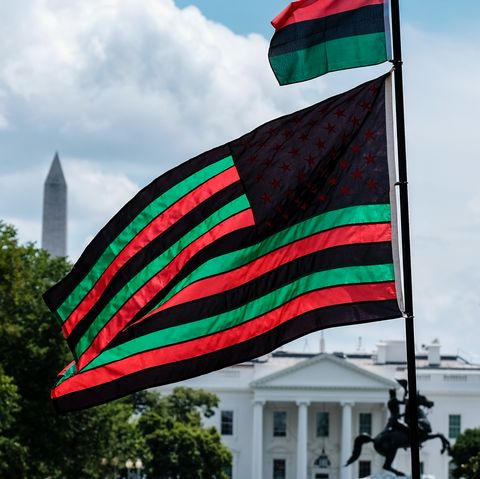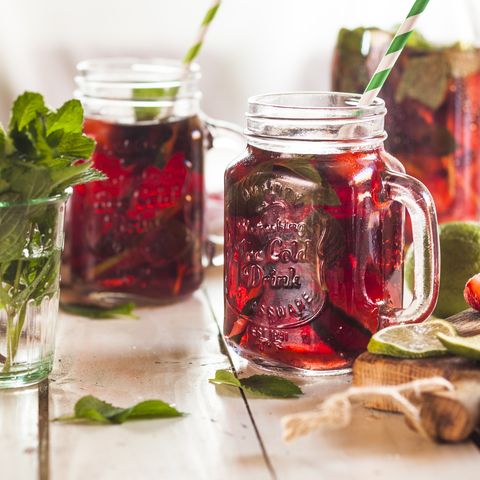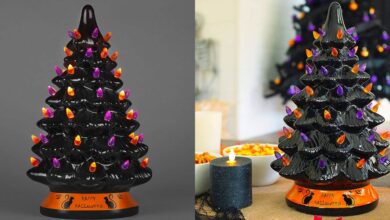The Meaning & Symbolism of the Flags’ Red, Blue, Black & Green

[ad_1]
Summer is heating up and with it, many of us are heading to the local park or a neighbor’s backyard to fire up the grill, crack open a cold one and have a few laughs with friends and loved ones. It just wouldn’t be the dog days without the scent of charcoal in the air, popsicles in the freezer and a damp swimsuit hanging from the shower rod.
Another hallmark of summer’s arrival for many? Juneteenth, which is celebrated every year on June 19. The holiday, also known as Emancipation Day, Freedom Day or Jubilee Day, commemorates June 19, 1865, the day the last remaining enslaved people in America learned that they were free. While the Emancipation Proclamation was handed down on January 1, 1863, news didn’t travel as quickly back then as it does today, and in Texas, slavery continued for years after, because many people simply weren’t aware of the news that the Civil War had ended and that Congress had passed the 13th Amendment. By 1866, formerly enslaved Black Texans began marking the day with annual “Jubilee Day” festivities.
What are the colors of the Juneteenth flag?
The holiday of Juneteenth is rich with symbolism, and that includes the official Juneteenth flag. The flag is the brainchild of activist “Boston Ben” Ben Haith, founder of the National Juneteenth Celebration Foundation (NJCF). Haith and collaborators Verlene Hines, Azim and Eliot Design created the flag in 1997 and Boston-based illustrator Lisa Jeanne Graf brought their red, white and blue vision of a zigzag shape surrounding a star to life. In 2000, the flag was revised into the version we know today, according to the National Juneteenth Observation Foundation. Seven years later, the date “June 19, 1865” was added so no one would ever forget what it stood for.
“The Juneteenth flags represent the history, and freedom the American Slaves and their descendants,” writes Graf on her website. “The design of the Juneteenth flag depicts a bursting new star on the horizon. The star represents a new freedom, a new people, a new star. The red, white and blue colors communicate that the American Slaves, and their descendants were all Americans.”
What about the Pan-African flag?
You may also see a red, black and green flag flying at Juneteenth barbecues, as well. That’s the Pan-African flag, adopted by the Universal Negro Improvement Association (UNIA) at a conference in New York City in 1920. The UNIA drafted and adopted the Declaration of Rights of the Negro Peoples of the World on August 13, 1920 at New York City’s Madison Square Garden. It included the declaration that red, black and green (or RBG) be the colors signifying the African race. Those three colors represent the blood, soil and prosperity of Africa and its people, according to the Pan-African Alliance.
- Red represents the millions of men and women who have lost their lives. Most recently, we remember not only civil rights leaders like Malcolm X and Martin Luther King Jr., but also Black people who have been killed in recent years, including George Floyd, Breonna Taylor, Trayvon Martin and Ahmaud Arbery.
- Black represents melanin, the soil of the Nile valley and the unification of the African diaspora. “Black compels us to remember that we Black men and women are all unified as members of one family,” says the Pan-African Alliance.
- Green stands for fertility, productivity and prosperity and the fertile cradle of Africa.
Red foods appear on Juneteenth tables, too.
Juneteenth is traditionally a barbecue holiday, where families and friends will gather around the almighty grill (or pit). But a Juneteenth meal just isn’t complete without red desserts and beverages, and many also wear the color red. Red symbolizes the bloodshed by enslaved ancestors due to the transatlantic slave trade, explains James Beard Award winner Adrian Miller, author of Black Smoke: African Americans and the United States of Barbecue. It may also have roots in the favorite colors of West African royal courts, but Miller notes that’s a less commonly held theory. Historically, red drinks date back to two drinks carried across the Atlantic from West Africa by enslaved people: hibiscus drinks and . Even barbecue itself can bring that red connection, especially in tomato-based sauces or the reddish ring around properly smoked meats.
This content is created and maintained by a third party, and imported onto this page to help users provide their email addresses. You may be able to find more information about this and similar content at piano.io
[ad_2]
Source link








